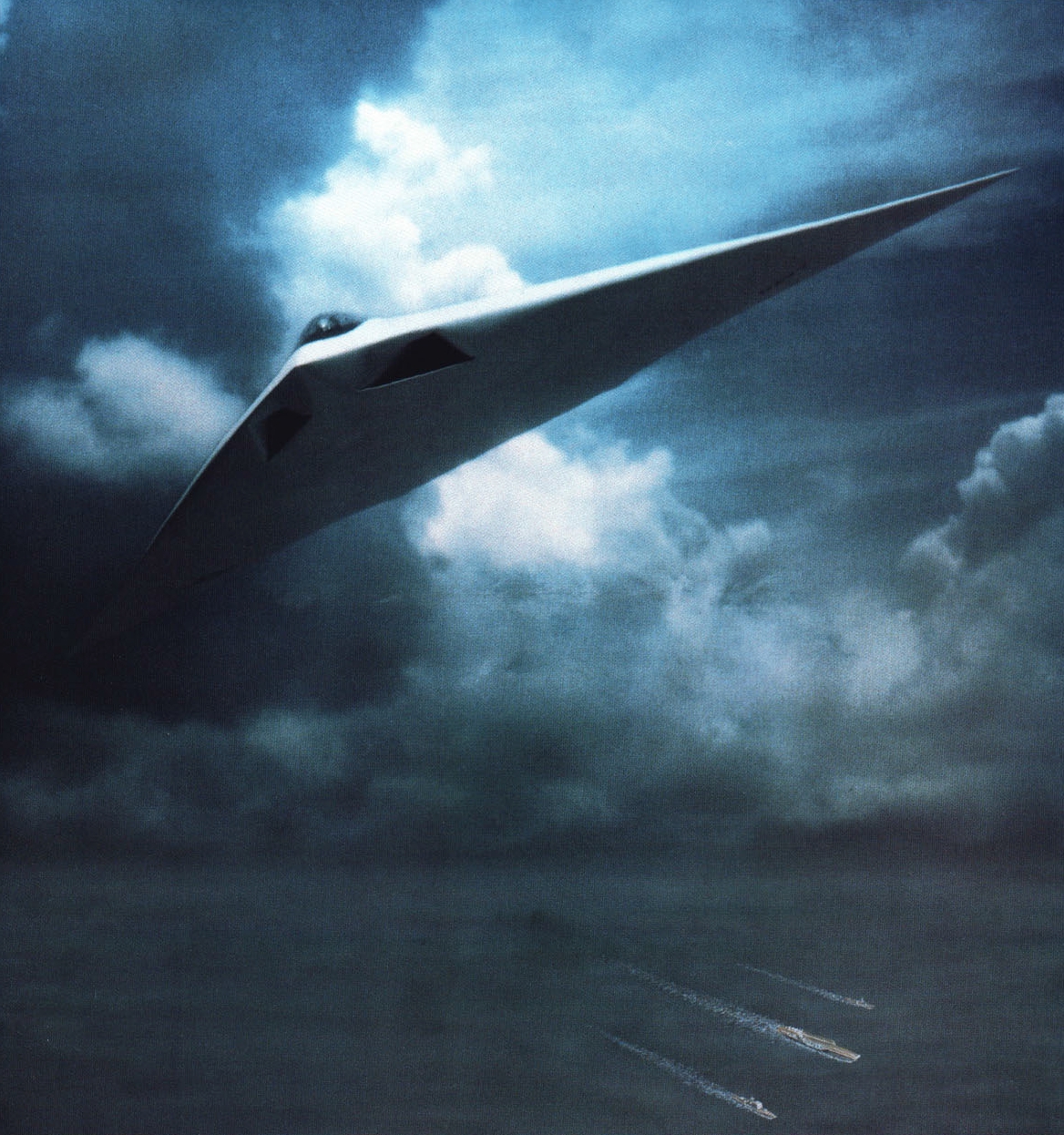Long before the fifth-generation F-35C stealth fighter jets became operational, the US Navy had conceptualized a stealthy carrier-borne bomber.
F-35 Jets: Is World’s Most Powerful Stealth Fighter Jet Losing Its ‘X-Factor’ At Supersonic Speeds?
In the 1980s, the Navy floated the concept to replace its long-range, low-observable attack aircraft A-6 ‘Intruder’ under the Advanced Tactical Aircraft (ATA) program.
McDonnell Douglas (now merged with Boeing) had partnered with General Dynamics to develop the Avenger, a subsonic “flying wing” bomber that visually resembled a miniature B-2 Spirit.
The US military was then leading the world with the integration of stealth technology and the A-12 bomber would have been one of the first outcomes of the successful use of stealth in attack bomber aircraft. But the program hit hurdles.
Salient Features
According to the US Naval Institute (USNI), the A-12 Avenger-II was to have greater speed and altitude than the A-6 Intruder, which was a part of the fleet since 1971.

With a maximum speed of 930 km/hr and a range of 1,500 km, the A-12 Avenger could carry up to two air-to-air missiles and two air-to-ground missiles like AIM-120 AMRAAM along with unguided or precision-guided bombs.
Some reports suggest that the A-12 was to be capable of delivering nuclear weapons held in its internal weapons bay as well.
The bomber had a relatively small fuselage and minimal tail surfaces, significantly reducing drag. The engine to be used in this stealthy aircraft was the General Electric F412 GE-D5F2 turbojets.
Combining stealth with the flexibility of carrier ops, the A-12 promised an unparalleled deep strike capability, according to National Interest.
It was envisioned as a two-man crew aircraft (similar to the A-6 Intruder), but for “other missions”—presumably electronic warfare variants—the A-12 would have a three-man crew.
With such promising prospects, the US Navy had planned to buy 620 aircraft and the Marine Corps another 238, eyeing a timeline of entering service from 1995.
Even the Air Force was reportedly interested in the A-12 bomber, considering a 400-plane replacement for its F-111 Aardvark fleet.
The A-12 was supposed to be a large aircraft and due to its odd shape and size of the wingspan, the bomber got the name of ‘Flying Dorito’.
What Happened To A-12 Finally?
The first flight of the aircraft was initially planned for December 1990. After delays, its critical design review was successfully completed in October 1990 and the maiden flight was rescheduled to early 1992.
However, in 1990, a US government report identified major problems with the program. The stealth coating was becoming difficult to integrate as the fixes substantially increased the Avenger’s weight.
The estimated unit cost for production aircraft was $96 million, and the program was over budget and some 18 months behind schedule, as per USNI.
After giving a chance to the Navy to justify the program, Secretary of Defense Dick Cheney canceled the further development of the A-12 Avenger-II in January 1991.
“No one could tell me how much the program was going to cost, even just through the full-scale development phase, or when it would be available. And data that had been presented at one point a few months ago turned out to be invalid and inaccurate,” Dick Cheney had said after canceling the program.
The reasons behind cancellation are still debated in US defense circles. Some believe that Avenger entered the design and production cycle just as the Cold War came to a close.
Facing a tight defense budget, Secretary of Defense Dick Cheney decided to kill the A-12 in favor of less risky programs.
Interestingly, the manner of its cancellation was contested through litigation until a settlement was reached in January 2014.
The two contractors, Doughlas which merged with its rival Boeing in 1997, and General Dynamics were asked to pay back the US Navy $2 billion that was spent on the design and development of the failed bomber.
However, the two contractors dragged the US Department of Defence to court for breach of contract and the arbitrary manner in which the program was canceled.
After years of litigation, the case was finally settled in 2014 with Boeing and General Dynamics agreeing to pay $200 million each to the US Navy.
Eventually, the US Navy settled for upgraded variants of F-18 Hornets and the A-6 Intruder never found a worthy replacement. The cancellation of the Avenger was considered the largest project termination in the US Defense Department history.
WATCH: China Turns To ‘Sand Mafia’ To Intimidate, Intrude Into Taiwan
Legacy of A-12
It is believed that the A-12 stealth bomber was one of the most advanced innovations of the US military in that century.
The full-size A-12 mockup was revealed to the public at the Naval Air Station Joint Reserve Base Fort Worth in June 1996 and later transported to Veterans Memorial Air Park adjacent to Meacham Airport in north Fort Worth in June 2013.
The controversy over its cancellation became so famous that James P. Stevenson, an Aviation historian, wrote a book The $5 Billion Misunderstanding: The Collapse of the Navy’s A-12 Stealth Bomber Program‘.
Though the stealthy Avenger could not take off, it gave lessons for future generations of stealth aircraft in the US Navy.
The Lockheed Martin F-35C, a carrier-capable fighter featuring stealth technology and oriented toward ground-attack operations, is considered in effect a successor to the A-12 in both role and industrial origins.
Inside The F-35 Lighting II Aircraft: What Makes The US Stealth Fighter Jets Truly ‘Invincible’
The F-35C became the US Navy’s first low-observable carrier-based aviation platform, planned to replace the F-18 Hornets as the carrier strike group’s primary offensive fighter for aerial defense and close air support.
The Air Force is now working on the Next Generation Bomber, a project which closely resembles the A-12 in essence and spirit.